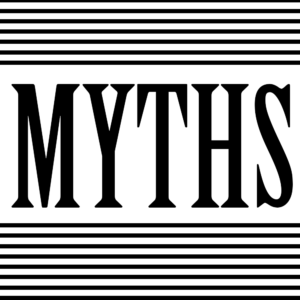Five web design myths debunked

We hear a lot about the importance of good web design, but how do we really know what’s true and what’s false? Just because we feel a particular way, just because we like it, does that make it true?
Here are a few web design myths that might trip you up if you don’t know the truth.
Myth: Like a good print ad, good web design must be eye-catching.
Truth: Print ad design and website design are different. They have different purposes, obstacles, and goals.
Each newspaper ad is in competition for the reader’s attention with all the other ads and news stories in that paper. Typically the person reading the publication isn’t there looking for ads. More likely they’re there for the news. This means that your ad has to grab their attention. It has to pull their eyes off the news and over to your ad. To achieve this, your may use bright colors, large images, or a large font.
On the other hand, when your prospect lands on your website, it is probably because you are offering something they are interested in. They want to learn what you have to offer. They don’t want to struggle to find the right information or skirt around moving objects. If they feel frustrated trying to navigate your website, they may assume that doing business with you will be equally frustrating. When information is presented in a clean and simple way, they’ll be able to find what they need quickly and easily.
And on the off chance that they’ve stumbled upon your site by accident, no amount of flashing lights or bright colors will to convince them to stay.
Myth: Reverse type is always good.
Truth: Light text on a dark background is harder to read than dark text on a light background.
You see it all the time – light text on a dark background. Reverse type can give variety to a page layout, but as a general rule, it is harder to read, particularly in large blocks. One of the most important aspects of a good website is readability. Reverse type, we know, makes reading more difficult. For that reason, we recommend using dark type on a light background for most situations. Read more about how color and contrast affect readability.
Myth: The website design must be bold.
Truth: The design of the site is not what you want to be noticed.
When someone visits your website, you want them to get the feeling that these people are really good at what they do. If your website is busy, takes a long time to load, or isn’t mobile-friendly, that can reflect poorly on the user’s opinion of your company. The purpose of the site layout should be to present the most important information in a clear and understandable way. The goal is not to have the visitor say, “Wow, what a cool web design.” Rather, we’d prefer that they say, “Your website is so easy to use and understand. It saves me time.”
Myth: Good design is the most important thing.
Truth: Content is king.
I am a designer, so for me the design is the most fun part of my job. However, I know that good design will not drive traffic to a website. Good design will not convince anyone to do business with you or to stay on your site long enough to learn if you have what they need. The single most important element of any website is the content it contains.
Visitors come to your website looking for information. To be successful in converting site visitors to customers, you’ll need to provide them with the information they need to make that decision. Have you provided answers to the most frequently asked questions? Have you offered an easy way to contact you? Develop good content, and good design will enhance its efficacy.
Myth: White space is wasted space.
Truth: White space is a necessary element in all good web design.
White space makes for a clean and simple look. It allows your message and your calls to action to stand out. White space makes buttons easier to find and click, and it brings more attention to your images.
Learn more about our Website Design Services.

You have a typo under the “truth” section f reverse type. You have “that” and you meant to have “than”
Good catch, thanks Mark!